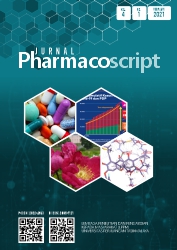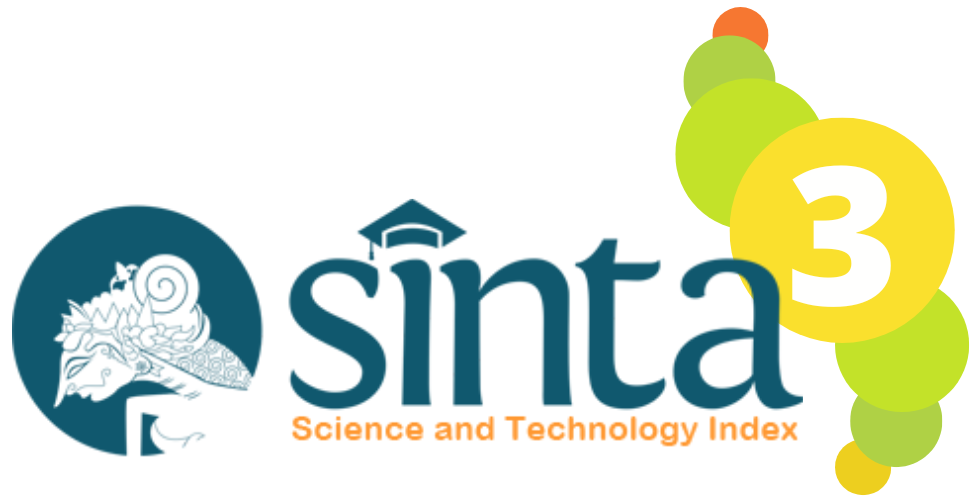FORMULASI DAN UJI ANTI BAKTERI GEL EKSTRAK ETANOL KULIT BAWANG PUTIH (Allium sativum L) TERHADAP BAKTERI Staphylococcus aureus
DOI:
https://doi.org/10.36423/pharmacoscript.v4i1.618Keywords:
ekstrak, kulit, bawang putih, antibakteriAbstract
Kulit bawang putih (Allium sativum L) mengandung flavanoid yang berkhasiat sebagai antibakteri. Ekstrak etanol kulit bawang putih menggunakan bahan pembentuk gel carbopol di formulasi dalam bentuk sediaan gel agar efektivitas terapetik serta kenyamanan penggunaan secara topikal dapat tercapai. Penelitian ini bertujuan mengetahui pengaruh variasi konsentrasi basis karbopol gel ekstrak etanol kulit bawang putih terhadap sifat fisik gel dan menguji aktivitas antibakteri terhadap Staphylococcus aureus. Metode maserasi dengan pelarut etanol 70% merupakan metode ekstraksi yang digunakan.Formula dibuat dalam tiga formula dengan memvariasikan konsentrasi karbopol yaitu 0,5, 0,75 dan 1 %. Pengujian sifat fisik yang dilakukan berupa uji organoleptis, homogenitas, viskositas, pH, daya sebar, dan uji daya lekat. Uji aktivitas antibakteri dilakukan menggunakan metode difusi dengan membuat sumuran yang diisi gel pada media agar. Hasil penelitian menunjukkan bahwa semakin tinggi konsentrasi gelling agent karbopol dalam gel, semakin tinggi viskositas dan daya lekat, serta makin rendah daya sebar, namun tidak berpengaruh terhadap homogenitas, organoleptik dan pH. Hasil uji bakteri menunjukkan bahwa pada konsentrasi karbopol 0,5, 0,75 dan 1 %. memberikan hambatan sebesar 10 mm sedangkan kontrol positif memberikan hambatan sebesar 20 mm.
References
Astuti Puji Dwi, Husni Patihul, Hartono Kusdi. (2017). Formulasi Dan Uji Stabilitas Fisik Sediaan Gel Antisep-tik Tangan Minyak Atsiri Bunga Lav-ender (Lavandula angustifolia Miller). Jurnal Farmaka,15,(1),176– 184.
Davis, W. W. dan T. R. Stout. 1971. Disc plate methods of microbiological an-tibiotic assay. Microbiology, 22, 659-665.
Dewi CC, Saptarini NM. (2016). Hidroksi Propil Metil Selulosa dan Karbomer Serta Sifat Fisikokimianya Sebagai Gelling Agent. Jurnal Farmaka, 14,(3),1–13.
Ifesan B. (2014).Investigation of Antioxidant and Antimicrobial Properties of Garlic Peel Extract (Allium sativum) and Its Use as Natural Food Additive in Cooked Beef. J Sci Res Reports,3,(5),711-721.
Karadzovska, D., Brooks, JD., Monteiro-Riviere ,NA., Riviere, JE.(2013). Predicting skin permeability from complex vehicles. Advanced Drug Delivery Reviews, 65(2).
Muhammad,G.,Muammad,I.,Sobia,K., Dawood, A., Muhammad JA, Kashis SA, et al. (2014) A comparative study of antimicrobial and antioxidant activities of garlic (Allium sativum.) extracts in various localities of Pakistan. African J Plant Sci,8(6),298–306.
Tranggono RI., Latifah, F. (2007). Buku Pegangan Ilmu Pengetahuan Kosmetik. Jakarta : Gramedia Pustaka Utama.
Verma,A., Singh,S., Kaur,R., Kumar,A., Jain,UK.(2013)Formulation, optimization and evaluation of clobetasol propionate gel. Int J Pharm Pharm Sci,6,(5),15-18.
Wijayanto,BAJI., Kurniawan,DW., Sobri, I.(2017) Pengembangan Produk Sediaan Gel Kombinasi Ekstrak Daun Sirsak (Annona Muricita L.) Dengan Ekstrak Rimpang Temulawak (Curcuma Xanthorhiza Roxb.) Sebagai Anti Bakteri Penyebab Jerawat (Propionibacterium Acne Dan Staphylococcus Epidermidis). Pharmacon, 6,(4),255-265.
Yuliana, A., Rofi, U. M., Fathurohman, M., &Rahmawati, L. (2021). UjiAk-tivitas Larutan InfusaTeh (Cameli-aSinensis (L.,) Kuntze) Dengan Penambahan Bawang Putih (Allium Sativum L) Terhadap Bakteri Shigel-la dysenteriae. Journal of Pharmaco-polium, 3(3)
Downloads
Published
Issue
Section
License
Copyright (c) 2021 Michrun Nisa

This work is licensed under a Creative Commons Attribution-ShareAlike 4.0 International License.
Authors who publish with this journal agree to the following terms:
- Authors retain copyright and grant the journal right of first publication, with the work [SPECIFY PERIOD OF TIME] after publication simultaneously licensed under a Creative Commons Attribution License that allows others to share the work with an acknowledgement of the work's authorship and initial publication in this journal.
- Authors are able to enter into separate, additional contractual arrangements for the non-exclusive distribution of the journal's published version of the work (e.g., post it to an institutional repository or publish it in a book), with an acknowledgement of its initial publication in this journal.
- Authors are permitted and encouraged to post their work online (e.g., in institutional repositories or on their website) prior to and during the submission process, as it can lead to productive exchanges, as well as earlier and greater citation of published work (See The Effect of Open Access).









